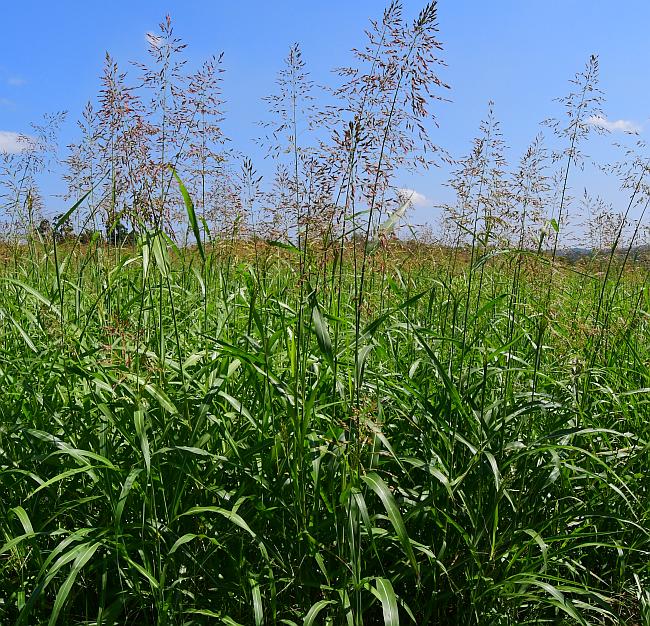Sorghum halepense (L.) Pers.
Johnson Grass

Introduced
CC = *
CW = 3
MOC = 53
© SRTurner
Sorghum halepense (L.) Pers.Johnson Grass | |
 |
Introduced CC = * CW = 3 MOC = 53 |
© SRTurner |
|
Family - Poaceae/Andropogoneae Habit - Perennial, C4 (warm season) grass, with stout, long-creeping, usually white rhizomes, forming colonies.
Stems - Ascending or erect, to 2 m or more, often stout, unbranched, circular in cross section.
Leaves - Leaf blades 10-90 cm long, 8-25 mm wide, the midrib thickened and often whitened adaxially.
Inflorescences - Dense panicles to 50 cm, the branches usually spreading at maturity, ending in small spikelike racemes with 2-6 nodes, typically with a yellowish, reddish, or yellow-brown coloration.
Spikelets - Glumes of the sessile, perfect spikelet 4-6 mm long, longer than the florets. Fertile lemma with the awn 8-15 mm long.
Fruits - Caryopses 2-3 mm long, oblong-ovate in outline. Flowering - June - November. Habitat - Forest openings, streambanks, prairies, pastures, fields, roadsides, railroads, open, disturbed areas. Origin - Native to Eurasia. Lookalikes - Sorghastrum nutans. Other info. - This weedy species can be found throughout much of Missouri, and throughout most of the southern half of the continental U.S. The plant is easy to identify while in flower because of its pyramidal inflorescences which have a reddish tinge. This is one of the largest and most common weedy grasses in the state. It can reach 3m tall. Photographs taken near Springfield, MO., 7-4-03 (DETenaglia); also along the Katy Trail near Dutzow, Warren County, MO, 8-20-2021, and near Labadie, Franklin County, MO, 8-22-2021 (SRTurner). |